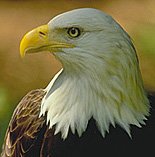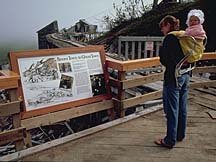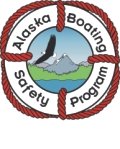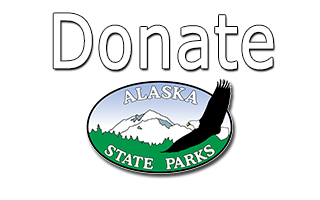Financial Overview
Updated: November, 2009
Alaska State Parks offer year-round, diverse recreational opportunities to over 4 million visitors every year. 75% of the visits to state parks are Alaskans. In fiscal year 2009, the total budget for the management of state parks was $8,391,100. This includes state general fund dollars, park user fees, and all other fund sources.

How our system is funded
63% of our funding is State General Fund Dollars.
27% of our budget comes from fees paid directly to us by park visitors.
10% of our budget comes from other fund sources, such as federal grants, or
payments from other agencies requesting our assistance in management of resources.
In FY 1992, the budget consisted of 84% General Fund, 14% park user fees, and 2% other funds.
What we do with the money
79% of that money is spent in the direct operation of park units. This covers staffing, utilities, vehicles and supplies necessary to keep the parks operating.
10% is spent on central office operations. That includes payroll, grant management, web page maintenance, and management of programs like Boating Safety, Recreational Trail grants, and Snowmobile grant programs.
11% is spent on services provided by other state agencies. This includes insurance, communications and information management and assistance from the department's Public Information Center.
As compared with 1992 when 87% of that money was spent in the direct operation of park units, 10% was spent on central office operations and 3% was spent on services provided by other state agencies.
How we compare with operations in other states

In terms of acreage, Alaska has the largest park system in the country. We have over 3.2 million acres of land. The next largest system is California, with 1.4 million acres. The national average state park system is 260,590 acres.
Alaska spends just $1.48 per park visitor, compared to $2.82, the national average.
There is now only one state in the country that spend less on their park systems than Alaska. North Dakota, with 9,230 acres, spends $3,199,184.
Alaska has a field staff of just 24 permanent full time employees and 40 permanent seasonal or part-time employees. We are able to hire up to 57 summer/temporary workers under the Alaska Conservation Corps program.
In addition, Alaska has the lowest number of maintenance workers in the nation. Alaska has 2 full-time and 7 seasonal positions. The national average is 120 full time, 42 part time and 326 seasonal positions.
This staffing level provides:
1 full time staff member per every 133,000 acres. The national average is 1 full time staff person per every 681 acres.
1 full time staff person per every 200,000 park visitors. The national average is 1 full time staff person per every 63,275 park visitors.
Alaska State Parks has been very successful putting volunteers to work. In FY2005, we had a total of 1137 volunteers, coming from Alaska and from the lower 48. They acted as campground hosts, participated in trail crews, and picked up litter. They provided us with 94,110 hours of volunteer labor.
What your dollars provide
In addition to the direct operation of 121 park units statewide, including law enforcement presence, janitorial contracts, volunteer programs, staffing, utilities, vehicles and supplies necessary to meet the everyday operating needs of the parks of 121 park units statewide, the State Parks Operating Budget supports the following programs:
The Recreational Trails Grant Program provides grants to non-profit groups and government entities (such as municipalities) across the state that fund the creation, restoration, or maintenance of trails and trail systems. The grants are provided by the Federal Highway Administration. No additional state dollars are required to operate this program.

The Alaska Boating Safety Program was first established in 1998. Since that time, recreational boating fatalities have dropped from 38 to the 2004 total of 13. The division continues it's commitment to safety on the water by educating the public through the 'kids don't float' program, visits to schools, and by maintaining a presence in the State parks. This program is funded entirely by a US Coast Guard Grant, and requires no additional state dollars.
The Snowmachine Trail Development Grant Program is similar to the recreational trail program, in that grants are awarded to nonprofit groups and government entities across the state, but the focus in this program is to provide safe riding opportunities through trail creation and maintenance and through educating riders about safety concerns. The source of funds for this program is Snowmobile Registration fees. No additional state dollars are required to operate this program.

